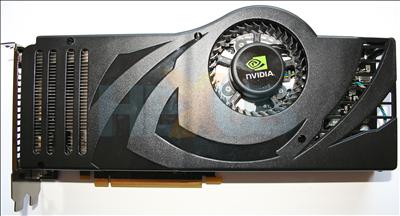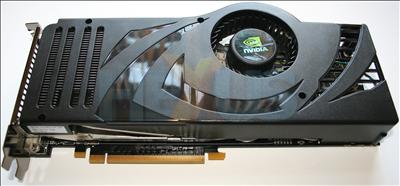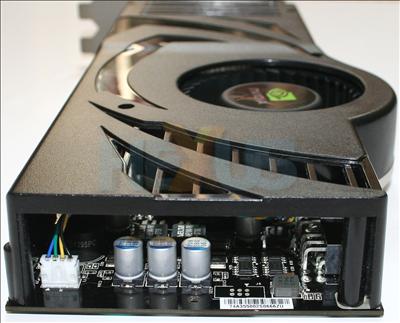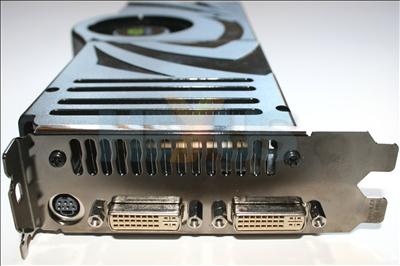Card appearance and thoughts
A new SKU and a new cooler. Whilst the Ultra's dual-slot-taking heatsink looks like a significant departure from the GTX's, it is, in fact, just a slight re-design that should offer better cooling.
The cooler now covers the entire PCB - which is the same length and width as a GTX's - and the radial fan has been repositioned a little higher up on the PCB to better draw air in. The heatsink still uses the tried-and-trusted heatpipe cooling, though, and it remains around the same size. NVIDIA has simply added in a front-end section, sitting above the heatsink, for better air channeling.
Carrying on the theme of pointing out similarities between the two high-end 8800 SKUs, the underlying heatsink cools the GPU and memory concurrently. NVIDIA's chosen some ultra-fast GDDR3 modules (Samsung K4J52324QE-BJ08) that are run at an effective 2160MHz - the fastest we've ever seen for a default-clocked card. Coupled with the Ultra's 384-bit memory bus they offer over 100GB/s of juicy bandwidth, and all premium GPUs just love oodles of fast memory throughput.
The PCB is still home to the two 6-pin PCIe power connectors found on the GeForce 8800 GTX, and NVIDIA claims a slight power reduction for the Ultra model, with the improvements down to engineering refinements for the GPU.
Given a fat enough wallet and the need for greater performance, you can add a second Ultra to form the ultimate SLI setup, preferably on an nForce 680i motherboard. You can see the golden fingers in their usual location, close to the card's backplate.
I wonder if I can get away with stating that it's 10.5in, black, and powerful.
On to more pertinent matters, the card heatsink's fan is extremely quiet in 2D mode and will be not be unduly noticed in all but the quietest system when running 3D apps.
Both DVI ports are dual-link but can only carry HDCP over a single-link connection. However, that statement is tempered by the fact that even 1080p can be outputted over a single-link DVI signal. Users of 30in panels will need to run their displays at non-native resolutions, obviously.
Again, as per GTX, hot air is exhausted from the rear of the card and through the ventilation grille you see above.
Nothing much to comment on with respect to the back of the card.















